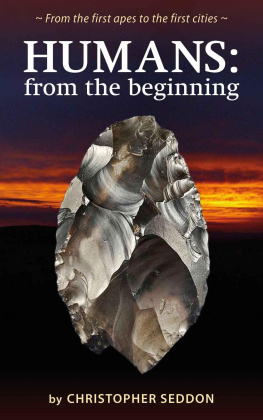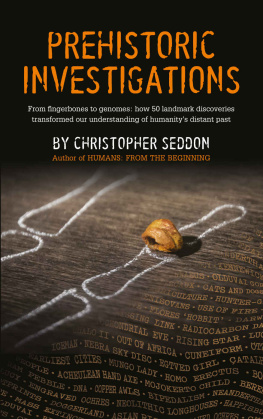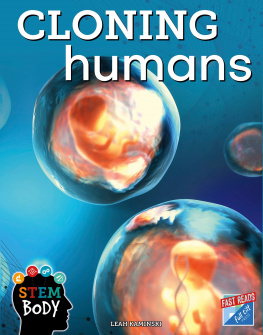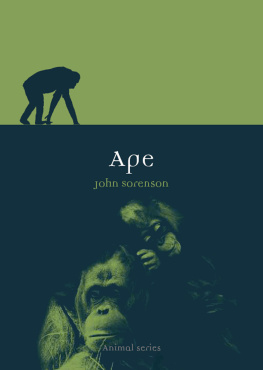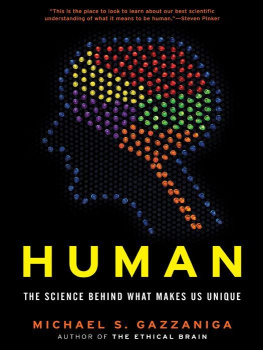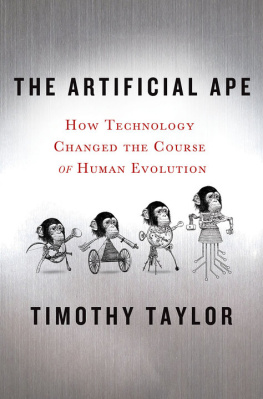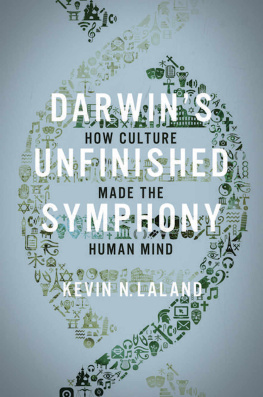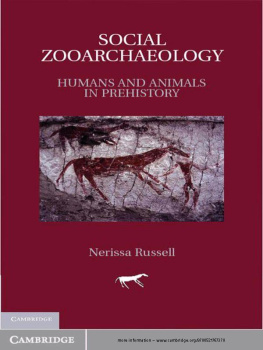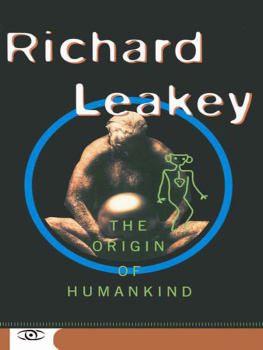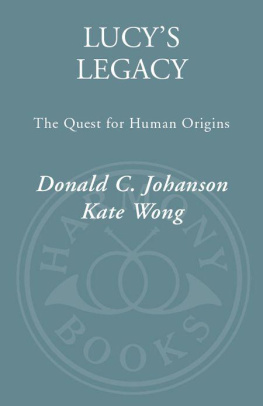Christopher Seddon - Humans: from the beginning: From the first apes to the first cities
Here you can read online Christopher Seddon - Humans: from the beginning: From the first apes to the first cities full text of the book (entire story) in english for free. Download pdf and epub, get meaning, cover and reviews about this ebook. year: 2014, publisher: Glanville Publications, genre: Romance novel. Description of the work, (preface) as well as reviews are available. Best literature library LitArk.com created for fans of good reading and offers a wide selection of genres:
Romance novel
Science fiction
Adventure
Detective
Science
History
Home and family
Prose
Art
Politics
Computer
Non-fiction
Religion
Business
Children
Humor
Choose a favorite category and find really read worthwhile books. Enjoy immersion in the world of imagination, feel the emotions of the characters or learn something new for yourself, make an fascinating discovery.
- Book:Humans: from the beginning: From the first apes to the first cities
- Author:
- Publisher:Glanville Publications
- Genre:
- Year:2014
- Rating:4 / 5
- Favourites:Add to favourites
- Your mark:
Humans: from the beginning: From the first apes to the first cities: summary, description and annotation
We offer to read an annotation, description, summary or preface (depends on what the author of the book "Humans: from the beginning: From the first apes to the first cities" wrote himself). If you haven't found the necessary information about the book — write in the comments, we will try to find it.
Humans: from the beginning is a single-volume guide to the human past. Drawing upon expert literature and the latest multi-disciplinary research, this rigorous but accessible book traces the whole of the human story from the first apes to the first cities. The end product of five years of research, it has also been planned from the ground up to take advantage of the eBook format and ease access to visual matter, references and glossary items.
Humans: from the beginning is written for the non-specialist, but it is sufficiently comprehensive in scope, rigorous in content, and well-referenced to serve as an ideal one-stop text not only for undergraduate students of relevant disciplines, but also to postgraduates, researchers and other academics seeking to broaden their knowledge.
This 32-chapter work presents an even-handed coverage of topics including:
How climate change has long played a pivotal role in our affairs and those of our ancestors.
How humans evolved from apes at a time when the apes were facing extinction.
Why the last common ancestor of humans and chimpanzees (our closest living relatives) might have been more like a human than a chimpanzee.
A possible Asian rather than African origin for the earliest humans.
Why the Neanderthals were not the dimwits of popular imagination.
How language and modern human behaviour evolved: an examination of theories including those of Robin Dunbar, Steven Mithen and Derek Bickerton.
How the small group of modern humans that eventually colonised the whole of the non-African world might have started from Arabia rather than Africa.
David Lewis-Williams theory that the cave art of Ice Age Europe was linked to a shamanistic belief system that might be rooted in the very architecture of the human brain.
Why the Neolithic transition from hunter-gathering to agriculture was a lengthy process, with many down sides.
Colin Renfrews still-controversial theory that the spread of farming communities in Neolithic times was responsible for the languages now spoken in many parts of the world.
How an Urban Revolution replaced egalitarian farming communities with socially-stratified kingdoms and city-states in just a few millennia.
How the complex, technological societies of today have much in common with not only the earliest states but much earlier primate societies.
Christopher Seddon: author's other books
Who wrote Humans: from the beginning: From the first apes to the first cities? Find out the surname, the name of the author of the book and a list of all author's works by series.

